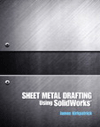FORT LAUDERDALE, Fla. — Cavitation Energy Systems (CES) has announced the filing of a provisional patent (69935), entitled “Cavitation Engine,” that the company said describes the first commercially viable system capable of harnessing the power of cavitation to produce energy at a fraction of the cost of using conventional technology. The Cavitation Engine incorporates CES proprietary impact chamber design in a scalable steam generation system which generates superheat steam for less energy than fossil-fueled boilers.
Cavitation, the process of vaporization, bubble generation, and bubble implosion in a flowing liquid, is used as the underlying process within the Cavitation Engine. The engine uses mechanical energy to convert water into steam via the process of cavitation and subsequent bubble collapse. Modified automotive fuel injectors are used to accelerate water saturated with cavitation nano-bubbles at a specially designed impact target. During the collision, enormous hydraulic pressures collapse the bubbles within the injection volume. These vapor bubbles have the ability to focus intense energy. The resulting heat contributes to the creation of superheat steam.
CES is especially targeting the application of its Cavitation Engine for trigeneration, which involves the combined use of steam for power generation, heating, and absorption cooling. The company is also targeting maritime applications of a variation of the system that consumes seawater and produces energy which can power rotary expander turbines.
“I am very excited to announce the filing of this provisional patent. We have worked for many years to perfect this. What we now have is workable, scalable, and economically feasible,” said Richard E. Aho, president and CEO.
CES stated it is actively involved in commercializing the technology and developing system components that operate synergistically with the system as well as creating new intellectual properties that leverage this technology.
For more information, visit www.cavitationenergysystems.com.
Publication date: 7/6/2015
Want more HVAC industry news and information? Join The NEWS on Facebook, Twitter, and LinkedIn today!








